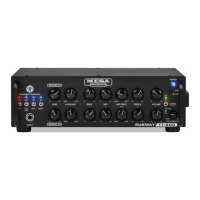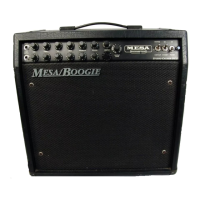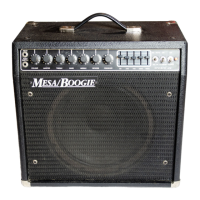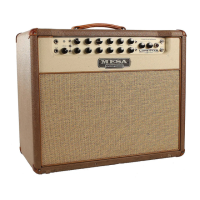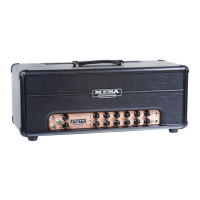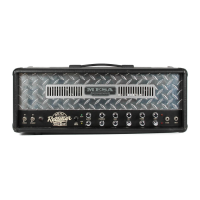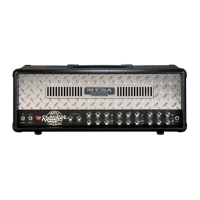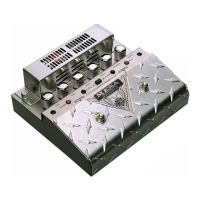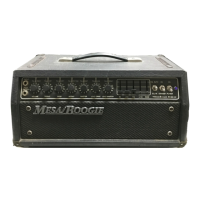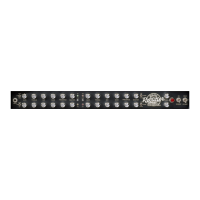5. Defective or blown speaker(s) in cabinet (test with known good cabinet, repair cabinet as needed)
6. Possible failing tube/valve in preamp (substitute with known good 12AT7 or 12AU7)
7. There is indeed a problem with the amp, call our customer service department and we will help you get this resolved.
SYMPTOM:
Noise (low frequency hum) in audio:
1. Defective instrument cable or problem with bass wiring (unplug instrument cable from amplifier, if hum goes away, this means
that the noise is entering from outside the amplifier. Try known good instrument cable and/or bass)
2. Problem with wiring or a device in the effects loop (remove send and receive wiring from the amp’s effects loop to identify the
source of the noise, correct as necessary.)
3. Power source wiring is not grounded/earthed (check all wiring for missing grounding/earthing pins, have qualified electrician
check building power wiring for missing ground/earth connections and correct as necessary.)
4. External stray magnetic field present coupling into the pickups, especially single coils (one clue that this may be the cause
is when the volume level of the hum changes with position of the bass. Possible causes are large power transformers located
near the performance area, if this occurs when you get close to another instrument amp it may be due to stray field from its
power supply)
5. If your amp model contains a tube/valve in the preamp, it’s possible that you are experiencing the beginning of a tube/valve
failure (replace tube/valve)
SYMPTOM:
Noise (high frequency hiss and hash) in audio:
1. If the noise goes away when the instrument cable into the amp is unplugged, the cause of the noise is external to the amp
(possibly an active preamp with the treble turned all the way up, a failing battery, defective on board preamp)
2. If your amp model contains a tube/valve in the preamp, it’s possible that you are experiencing the beginning of a tube/valve
failure (replace tube/valve)
3. If there neon or fluorescent lighting close by, it’s possible that EMI is radiating into the pick-up wiring (try turning off such light-
ing to see if noise goes away. If so, it could be arcing secondary wire on neon lighting, failing ballast or tube on fluorescent
lighting, radiated EMI getting into instrument pick-up)
4. Power source wiring is not grounded/earthed (check all wiring for missing grounding/earthing pins, have qualified electrician
check building power wiring for missing ground/earth connections and correct as necessary.)
5. Problem with wiring or a device in the effects loop (remove send and receive wiring from the amp’s effects loop to identify
the source of the noise, correct as necessary.)
6. Tweeter turned all the way up in a quiet room (may need to turn tweeter down under such conditions, especially if the sen-
sitivity of the tweeter greatly exceeds that of the low frequency drivers with tweeter turned up)
SYMPTOM:
Noise (popping) in audio:
1. Popping while playing, especially one string. (check bass set-up to be sure there is adequate clearances between the string
and pickup pole pieces.)
2. Popping while just sitting there, or when touched. (under dry environmental conditions, it’s possible that electrostatic discharge
is the cause. (try antistatic mat on floor, humidifier in room)
3. Popping when tapping or banging on chassis. If your amp model contains a tube/valve in the preamp, it’s possible that you
are experiencing the beginning of a tube/valve failure (replace tube/valve)
4. Popping or static noise can be caused by some cellular phone devices, especially if they are located close to pickups. Turning
the phone off or setting to “airplane mode” will eliminate this as a cause.
PAGE 12
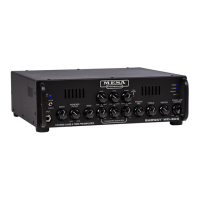
